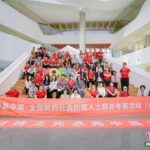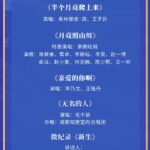Original Title: Water Pollution Incident Detection, Tracing, and Handling Efficiency All Increased by 80%—
Chongqing Explores Digital Ecological Governance with “Bayu Water Management”
In Chongqing, how long does it take to detect a water pollution problem?
In the past, it might have taken 7 days or even longer; now it takes within 24 hours.
On August 24, the main conference room of the Municipal Ecology and Environment Bureau featured two large 20-square-meter high-definition screens at the front and back, displaying data that clearly showed the real-time water environment conditions of rivers across the city—this is the “Bayu Water Management” application system.
“The ‘Bayu Water Management’ application system focuses on core water management tasks, breaking them down into over 700 specific items. By restructuring processes and systems, it integrates more than 690 types of data from 22 municipal departments, including agriculture, water resources, and construction. It has successfully created five application scenarios for water environments: ‘perception–warning–governance–assessment–evaluation,’ building an integrated ‘sky-land’ digital water ecological intelligent perception network.” The system has improved the efficiency of detecting, tracing, and handling water pollution incidents by 80%.
Establishing an Integrated “Sky-Land” Intelligent Perception Network
“The Long River Huhai section’s daily average total phosphorus and permanganate index exceeded standards, with concentrations of 0.239 mg/L and 6.005 mg/L, exceeding the target by 0.2 times and 0.001 times, respectively.” One day in April last year, relevant personnel from the Shizhu Tujia Autonomous County Ecology and Environment Bureau, environmental protection officers from Shizhu Xialu Subdistrict, and relevant officials from the Fengdu County Ecology and Environment Bureau’s Pollution Prevention and Control Division simultaneously received such an alert message.
The alert was automatically sent by the “Bayu Water Management” application system, reminding relevant responsible units and personnel to monitor abnormal water quality and ensure the safety of drinking water sources.
Within less than a minute of receiving the alert, the personnel also received a problem list dispatched by the system: promptly conduct law enforcement inspections of industrial parks, check along the river for risks such as sewage overflow, and other pollution risks.
It turned out that the “Bayu Water Management” application system automatically identified the number of sewage outlets, industrial parks, enterprises, livestock farms, and other sources within the catchment area of the Long River Huhai section. After preliminary tracing, it pinpointed 2 sewage outlets and 7 corresponding industrial enterprises. Based on data analysis, it identified potential issues such as sewage overflow, illegal discharge by enterprises, and agricultural non-point source pollution, then generated and dispatched a list of suspected problems.
By around 11 a.m. on the third day, all overflow issues were resolved, and the water quality at the Long River Huhai section returned to normal.
The rapid handling of this incident was due to the timely detection of the pollution problem by the “Bayu Water Management” application system.
“The ‘Bayu Water Management’ application system relies on IRS to break down data barriers, establishing an integrated ‘sky-land’ intelligent perception network that aggregates over 16,000 perception points, enabling intelligent monitoring of 510 rivers. The average time to detect problems has been reduced from 7 days to within 24 hours.” The system creates a “digital water management map” tailored for each river, making the water environment visible, searchable, and analyzable. It builds a new digital water governance framework featuring an overview of water conditions on one screen, coordinated water pollution treatment, closed-loop handling of water issues, and collaborative management of water-related tasks.
AI Model Predicts Water Quality at Sections for the Next 3 Days
The 88-kilometer-long Liangtan River, a first-level tributary on the right bank of the Jialing River, is the secondary river with the largest basin area and the longest course in Chongqing’s central urban area.
Flowing through the Chongqing High-tech Zone of the Western Science City, Shapingba, and Beibei, the Liangtan River was once severely polluted in its middle and lower reaches due to direct sewage discharge from both banks. After years of intensive treatment, the Liangtan River Basin has been revitalized, restoring its former clear waters and green banks.
“Currently, two monitoring points are set at the boundary sections of the Liangtan River within Shapingba District: one at Laijia Bridge and another at Xixi Bridge. Both the incoming and outgoing water quality data are updated every




